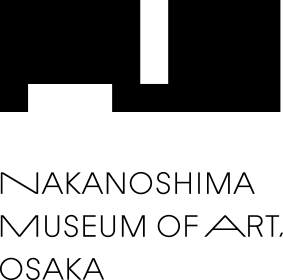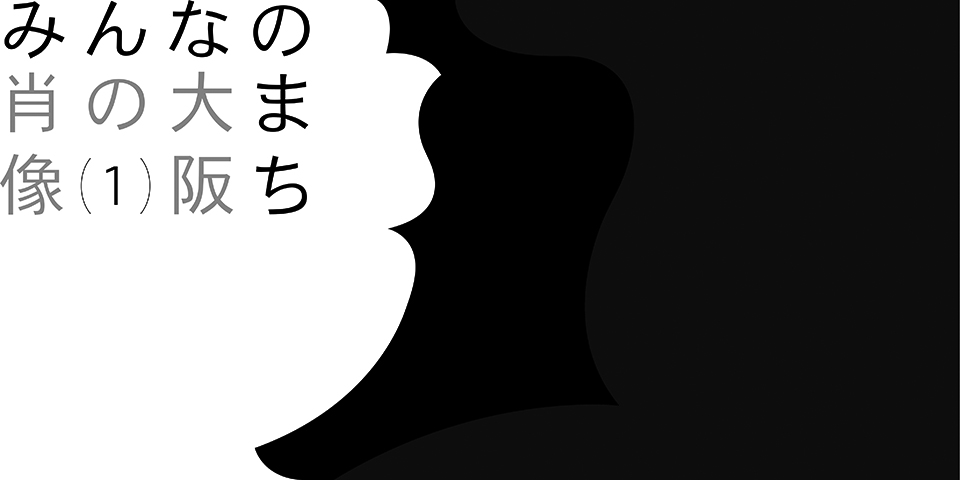

This event has ended.
Inaugural Exhibition
Our City-Portrait of Osaka[Part 1]
2022-04-09 – 2022-07-03
Summary
In celebration of this long-awaited opening, the exhibition Our City—Portrait of Osaka focuses on the city of Osaka, the museum's home.
Osaka has experienced a lot of changes between the start of the Meiji Period in the 1860s and the present day, following the path of modernization and enduring the ravages of war. Two new centuries have arrived, and Osaka City is now a metropolis, but it has retained its distinctive character and continues to be "our city," a city for everyone.
This exhibition is an in-depth exploration of the charm and appeal of Osaka, drawing mainly from the Nakanoshima Museum of Art, Osaka’s diverse collection including paintings, photos, and posters, augmented by pieces from museums, art museums, companies, and other organizations in Osaka City, Osaka Prefecture, and elsewhere.
It evokes nostalgia for Osaka’s past, and may be an opportunity to discover aspects of Osaka you did not know about in places you see every day. The exhibition invites you on a trip through time into Osaka’s past, presenting many sides to Osaka that have been a part of its history over the last century and a half.
Information about the Exhibition
| Dates | April 9 – July 3, 2022 Closed on Mondays (except May 2) * Some exhibits will be rotated on May 17. |
|---|---|
| Opening hours | 10:00–17:00 (last entry 16:30) |
| Venue | Nakanoshima Museum of Art, Osaka 4F Galleries |
| Organizer | Nakanoshima Museum of Art, Osaka and The Yomiuri Shimbun |
| Grants | The Mitsubishi UFJ Trust Cultural Foundation |
| Admission fee | Adults: 1,200 yen University/High school students: 800 yen Junior high school/Elementary students: Free admission * The museum may close without notice in the event of disasters or other circumstances beyond our control. * Prices include tax. |
| List of Works | List of Works |
Part 1: Signposts to the city—Meiji, Taisho, and prewar Showa (April 9–July 3)
Starting in Nakanoshima, where this museum is located, Part 1 presents Osaka as it transformed into a modern city after the Meiji Restoration in 1868. During the Taisho Period (from 1912 to the beginning of the Showa Period in 1926), when Osaka grew so much that it became the city with the largest population in Japan, gaining the nickname “Great Osaka” (Dai Osaka), art also developed in distinctive ways. Artists were drawn to things such as Osaka’s flourishing economy, its developing railway network, and the emergence of department stores and centers of entertainment and recreation, and the development of modern art was stimulated by various industries, including the pharmaceutical industry, which took off owing to the traditional concentration of pharmaceutical wholesalers in the area during the Edo Period (pre-1968), and the publishing industry, which flourished in early-modern and modern times. This lively era is presented through some 270 paintings, photos, posters, and other works and materials. (Some works will be rotated for the second half of Part 1 on May 17.)
Part 1: Three highlights
1. Masterpieces depicting Nakanoshima and other parts of Aqua Metropolis Osaka Presenting Nakanoshima as painted by Saeki Yuzo, and other landscapes.
2. Prewar retro posters Focusing on characteristic typefaces unique to the times, such as Yamada Shinkichi’s kinema moji.
3. The many talents of famous painters Leading Osaka Nihonga painter Kitano Tsunetomi created many of the original paintings that became posters.
Chapters
- Chapter 1: A walk through Osaka’s past—Starting in Nakanoshima
- Chapter 2: The landscape stirs
- Chapter 3: The forcefield of public attention
- Chapter 4: Modernism in a mercantile city
- Chapter 5: Looming clouds of war
Akamatsu Rinsaku, Amano Ryuichi, Aoki Koho, Asai Chu, Fumon Gyo, Hirai Terushichi, Ikeda Yoson, Imatake Shichiro, Kataoka Toshiro, Kawasaki Kametaro, Kono Tetsu, Koide Narashige, Koishi Kiyoshi, Koiso Ryohei, Kunieda Kinzo, Maeda Toshiro, Moriwaki Takayuki, Nabei Katsuyuki, Nakamura Shin, Oda Kazuma, Saeki Yuzo, Shibata Kazuma, Shiihara Osamu, Shimizu Masashi, Sugai Kumi, Tanahashi Shisui, Tanaka Kenzo, Ueda Bizan, Umesaka Ori, Yamanouchi Gusen, Yasui Nakaji, Yoshihara Jiro, Shochikuza News, Kaikan Geijutsu, and others (Artists are listed alphabetically.)
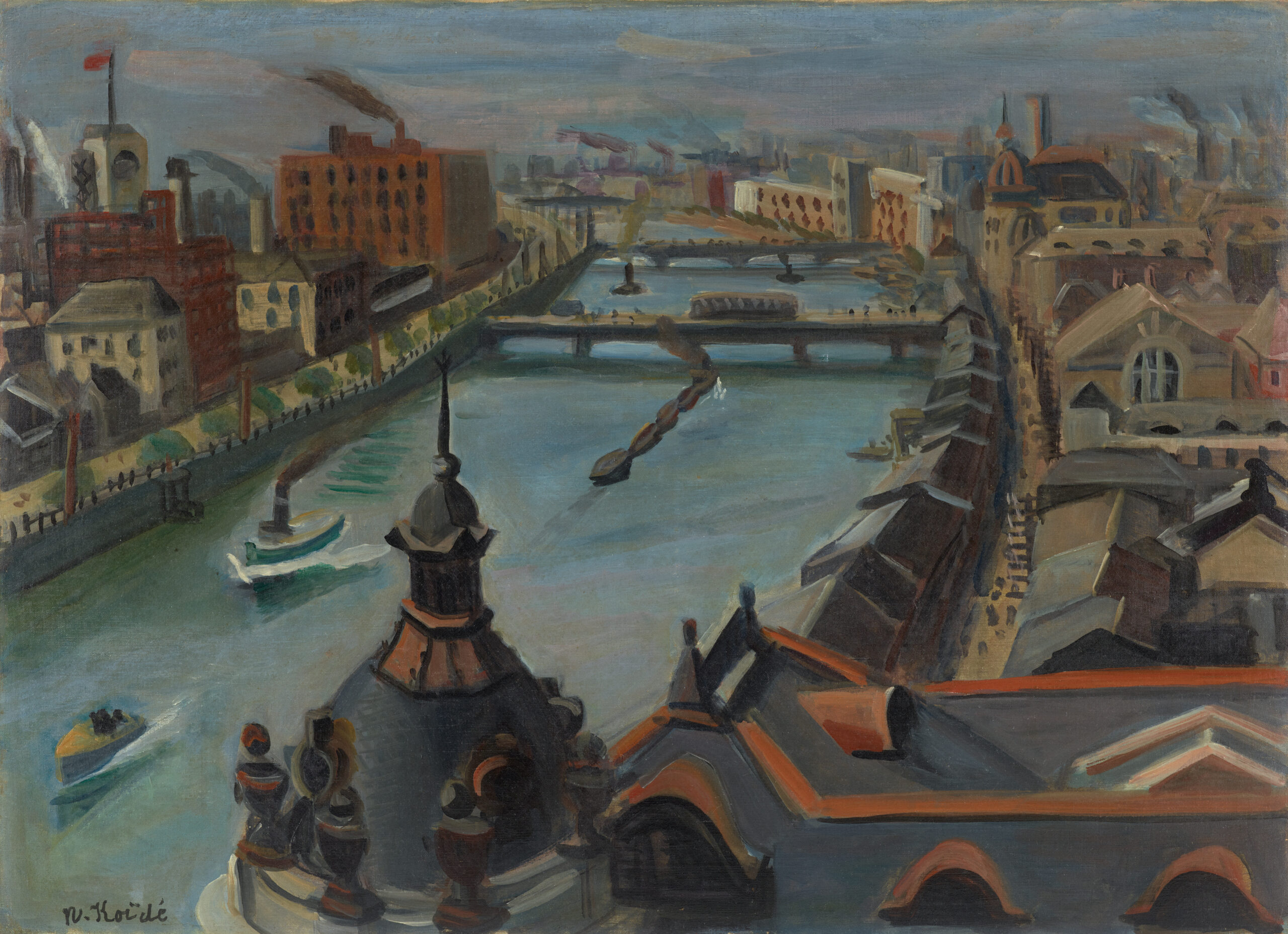
Koide Narashige, Cityscape
1925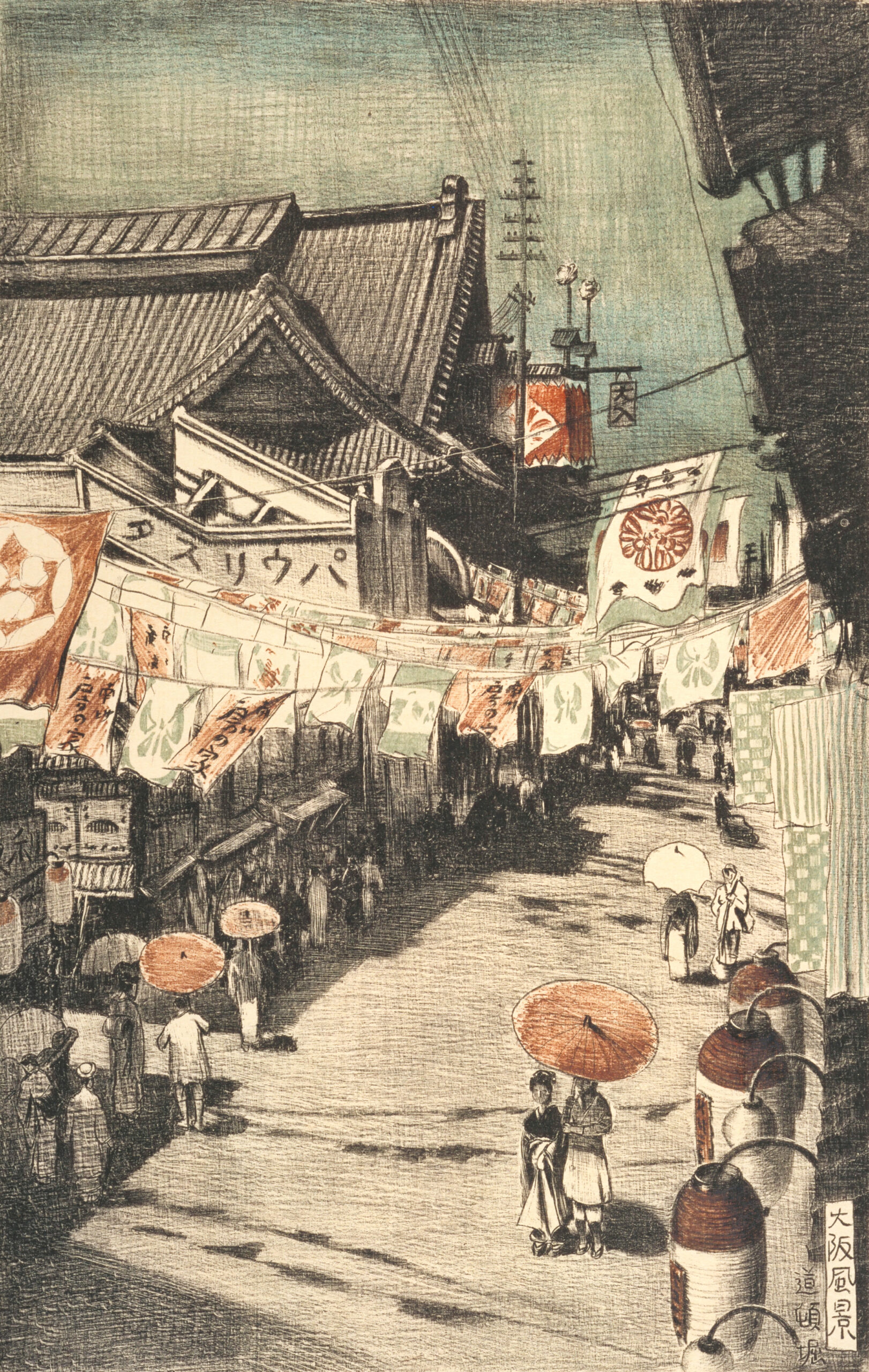
Oda KazumaDotonbori
1917
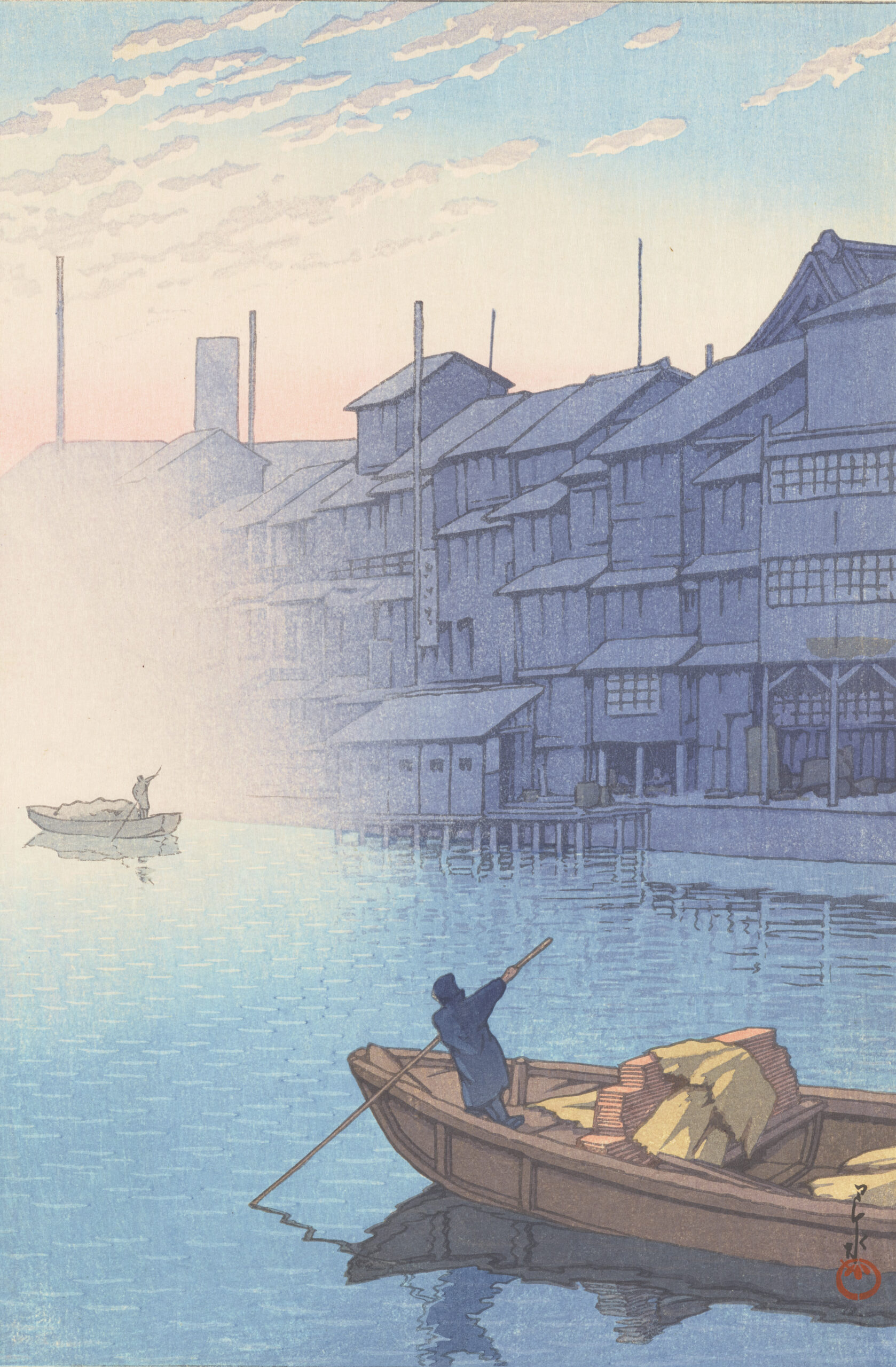
Kawase Hasui, Morning in Dotonbori, Osaka
1933
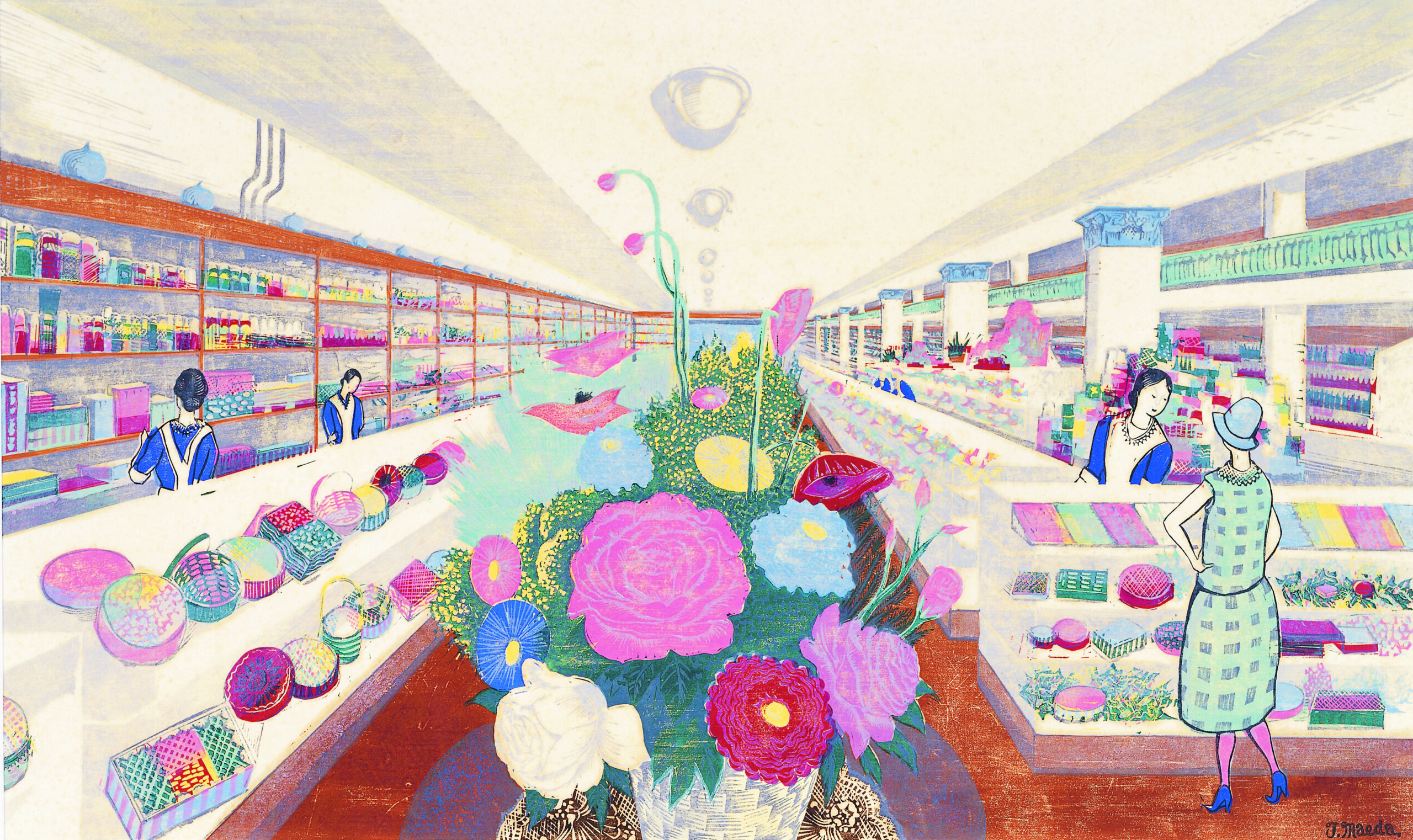
Maeda Toshiro, Decoration in the Department Store
1930s
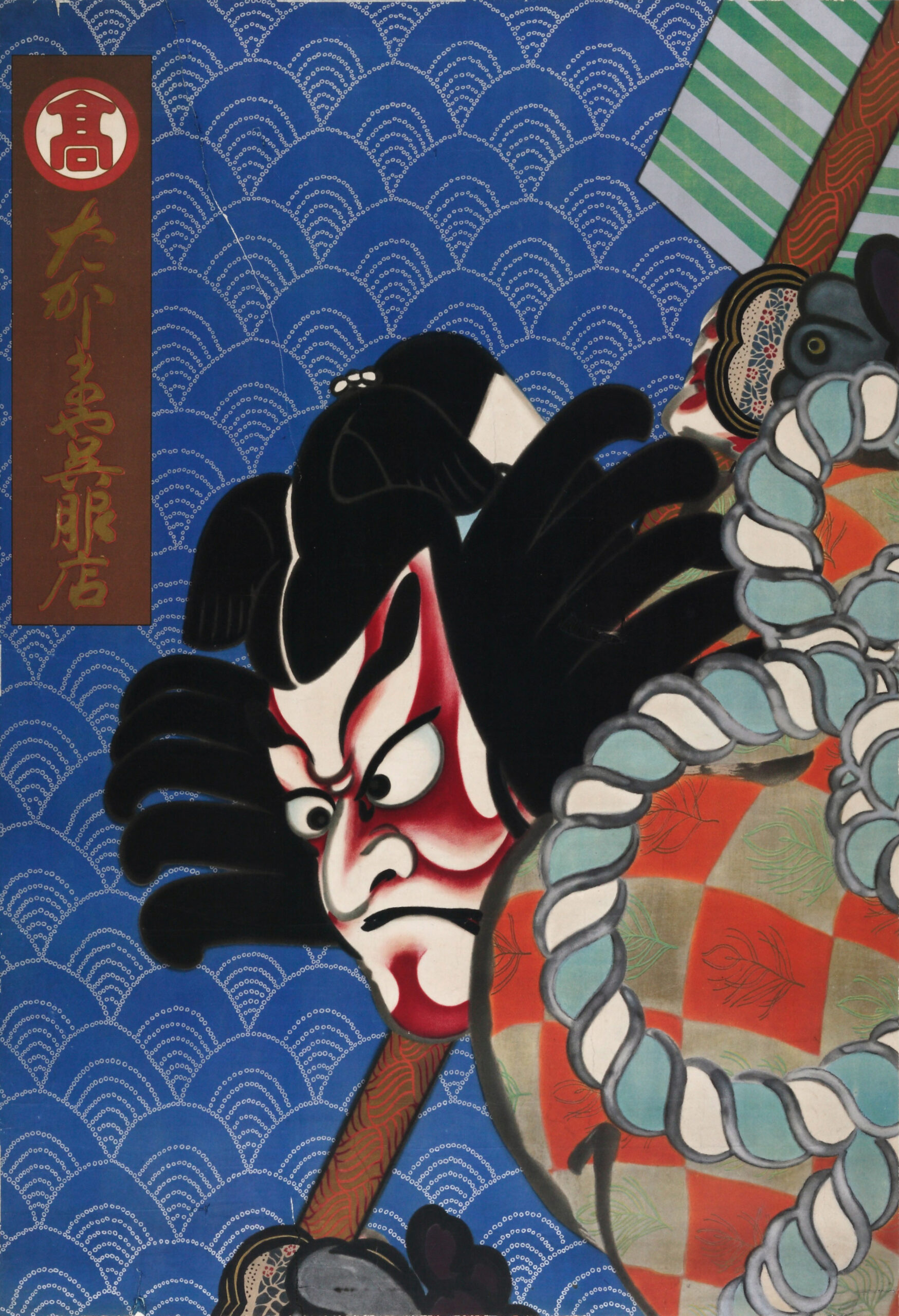
Kitano Tsunetomi, Takashimaya kimono fabric shop poster (Yanone Goro)
1919
Takashimaya Archives collection
-scaled.jpg)
Yamada Shinkichi, Forbidden Paradise, Shochikuza Theatre, The Captain's Daughter
1919
Kyoto Institute of Technology Museum and Archives collection
(AN.2694-27)
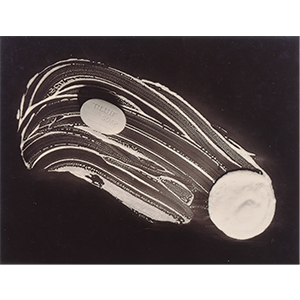
Koishi Kiyoshi,Club Soap
1931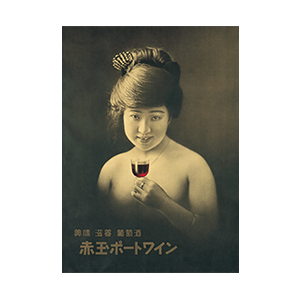
Kataoka Toshiro, Akadama Port Wine
1922
Suntory Poster Collection (deposited with Nakanoshima Museum of Art, Osaka)
Related events
Lecture: Great Osaka rendered in art—Modern landscapes and their painters
| Dates | April 23, 2022 14:00 – 15:30 |
|---|---|
| Speakers | Hashizume Setsuya (professor, Osaka University) |
| Venue | Hall |
Gallery talk by curator
| Dates | April 16 , May 18, June 11, June 22, 10:30 – 11:30 |
|---|---|
| Venue | Nakanoshima Museum of Art, Osaka 4F Gallery |
Exhibition main visuals by the Expo 2025 logo creator
The main visuals for Our City-Portrait of Osaka were created by Shimada Tamotsu (Shimada Design Inc.), the head of Team Inari, which created the winning entry for the 2025 Osaka Kansai Expo logo.
Osaka—From Toyono in the north to Senshu in the south, from the foot of Mount Ikoma in the east to the coast of Osaka Bay in the west, life in Osaka is surprisingly rich with diverse culture and different environments, interacting every day with people outside the prefecture and throughout the world. In order to express this distinctiveness, I created two versions reflecting the unique form of the map of Osaka Prefecture, and assigned the images, each of which extend outwards, to Part 1 and 2. By making the keynote color black, the visuals link this extension to the Nakanoshima Museum of Art, Osaka.
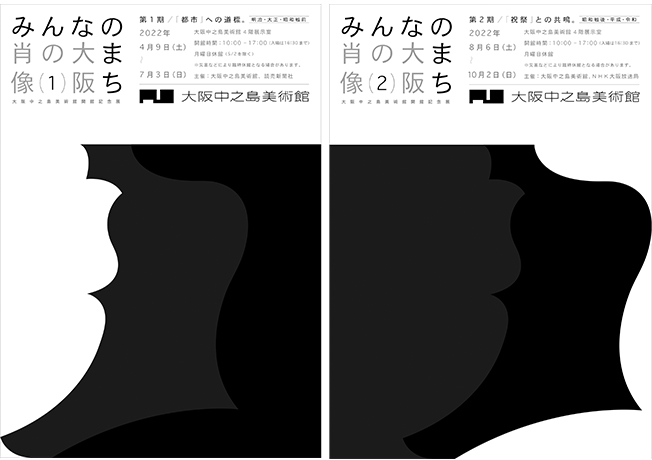
From left: Flyers announcing Parts 1 and 2 of Our City—Portrait of Osaka
